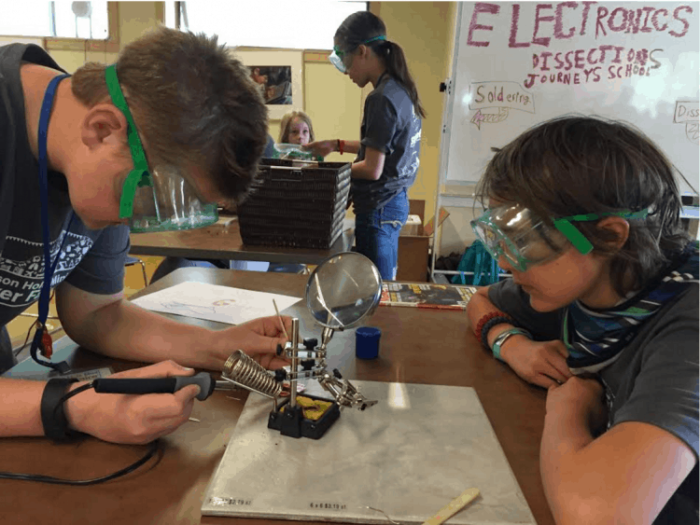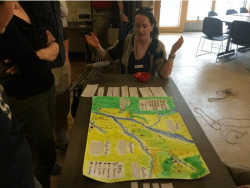Challenges & Recommendations
With great economic and societal opportunity comes great challenges. Here are a few ways to get started.



We are, by nature, building the plane in the air. This results in numerous challenges seen and unforeseen, but it also results in tons of opportunities. We’ve outlined a few of the core barriers to starting below and provided some recommendations for how to begin to confront them.
Challenges
Thinking collectively. Schools, industries and government often work in silos. If we are to start building towards a new, clean future, we need all sectors to come together and create pathways to green skills and new ways of thinking about abundance.
Lack of Agency. It is rare for a school/district to have someone leading this work, both as liaison to community partnerships AND a leader in sustainability and next gen skills.
Lack of Awareness. We’ve known for decades that there is a problem with career counseling in our K-12 system. Often, there is no career counseling for kids that aren’t college-ready and, similarly, there is very little guidance on affordability of credentials so students understand how to pay for pathways as well as the cost/benefits of each. Not to mention the fact that green skills and sustainability are still a novel concept to many. We must realize that this transition is everyone’s responsibility.
Pre-existing Stigmas. For many years there has been a view of blue-collar, trade jobs as inferior to white collar jobs (knowledge work). To radically shift infrastructure and adapt to changing ecosystems, we can no longer afford to hold these two types of jobs at odds with one another.
Unknown Unknowns. The challenges are exponential, the impacts are severe and the ramifications are oftentimes difficult to predict.
Recommendations
Partner. Higher ed institutions (2 year and 4 year) who already have green career programs should look to partner with their local high schools to bring early college in high school/dual enrollment/P-TECH/etc (and if they have current industry partners to bring them along in the partnership too)Increased interest. If you can’t find climate literacy and green pathways in your pre-existing statewide education system, connect with organizations that have the resources or curricula to get started.
Build Awareness. Build a K12 continuum so that students are aware of climate literacy and can build upon it as they get older, even if they don’t choose a specific green pathway – but to recognize that all careers will require environmental literacy to some extent and students will be more prepared for college and career if they have this knowledge
Launch. Introduce accelerated pathways (P-TECH, dual enrollment, apprenticeships, credentials and badges) to better prepare and more quickly prepare students for green jobs and to close the skills gap. It will take entrepreneurship to problem-solve and create new infrastructure for the green economy
Fund or be Funded. A little bit of money and a third-party vote of confidence can go a long way. Consider looking for (micro)grants, resources, partnerships in your community and opportunities to secure state and federal funding for larger programs and changes – there is funding available and policies that have been put into place so let’s take advantage of it!
Hire a sustainability director. By putting someone in charge of this (making it part of governance) change is more likely to happen.
Climate Action Plan. A climate action plan is a great way to get started and numerous organizations across the country are supporting schools to do the necessary community work to lay out an actionable and effective plan.